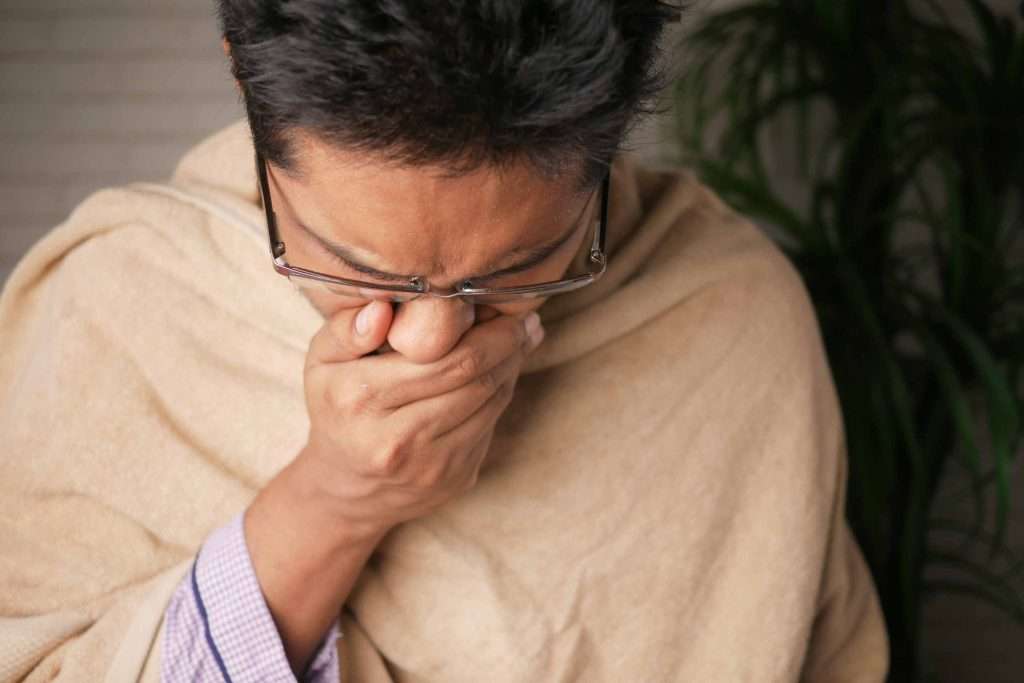How to Prevent Algae Growth in Your Swimming Pool in singapore

Maintaining a swimming pool is essential for both the aesthetic appeal and safety of your pool. Algae growth, while common, can quickly turn your pool from inviting to unsightly, creating slippery surfaces and fostering the growth of harmful bacteria.
In this article, we’ll explore the different types of pool algae, their causes, and the best methods to prevent and eliminate them, ensuring your pool remains safe, clean and ready for use.
What is Pool Algae?
Pool algae are tiny organisms that can grow in swimming pools when conditions allow. They thrive in pools where water circulation, sanitation, and chemical balance are not properly maintained. Algae can cause the pool water to become cloudy and lead to green, yellow, black, or even pink stains on the surfaces.
Not only are algae growths unsightly, but they also create slippery surfaces and may increase the risk of bacteria in the pool. Keeping up with regular pool maintenance and the right chemical treatments is key to preventing algae from taking over your pool.
What are the Types of Pool Algae?
There are several types of algae that can grow in your pool, each with distinct characteristics:
Green Algae
Is the most common type, appearing as a green, cloudy presence in the water. It grows quickly in warm weather and spreads easily through wind or swimmers. Green algae can be removed with proper filtration, shock treatments, and algaecides.
Mustard Algae
Has a yellow or brownish tint and grows in shaded areas of the pool. It’s resistant to chlorine and can be tough to eliminate, requiring special algaecides, higher chlorine levels, and regular brushing.
Black Algae
Is dark, often black or dark green, and forms in patches on pool surfaces. It has root-like structures that make it difficult to remove. Black algae requires aggressive cleaning, strong algaecides, and sometimes pool resurfacing.
Pink Algae
Appears as a slimy, pinkish film in shaded areas and thrives in warm, moist conditions. While less common, it creates slippery surfaces and needs regular cleaning, proper filtration, and targeted algaecides for control.
What Causes Algae Growth in Pools?
Algae in a pool can be caused by several factors:
- Spores from soil and plant debris can easily make their way into the water, often carried by wind, rain, or even contaminated pool tools. Once they enter the pool, they can quickly multiply under the right conditions.
- Poor pool maintenance is a common reason for algae growth. When water circulation, chemical balance, or sanitation isn’t properly maintained, algae can thrive.
- Inadequate filtration also provides the perfect environment for algae to grow, highlighting the importance of regular pool care to keep your water clean and clear.
What are the Health Effects of Pool Algae on Humans?

While algae in ponds may not directly harm human health, they create an unpleasant appearance and can foster the growth of harmful bacteria, which poses significant health risks. Here’s a breakdown of the key issues caused by algae in pools:
- Allergic Reactions: Swimmers sensitive to algae may experience itching and redness.
- Bacteria Growth: Algae encourages bacteria growth, reducing chlorine’s effectiveness and raising pH levels, which can threaten health.
- Slippery Surfaces: Algae make pool floors and steps slippery, increasing the risk of accidents.
Can You Swim in a Pool with Algae?
No, swimming in a pool with an algae infestation is not safe or advisable, especially for kids. While algae itself isn’t directly harmful, it creates conditions that promote bacteria and pathogen growth, such as E. coli, which can lead to skin infections, gastrointestinal issues, or other health risks. Algae also reduces water visibility, increasing the risk of accidents, and can make surfaces slippery, leading to falls. For your safety, avoid swimming in a pool with algae until it has been thoroughly cleaned and treated.
6 Core Practices to Prevent Pool Algae in Singapore
Here are the critical actions to take in preventing algae growth in your pool:
1. Maintain Good Water Circulation
Without proper circulation, pool water can become stagnant, creating the perfect environment for algae to grow. Algae thrive in still water, so maintaining good water movement is essential to prevent their spread. Ensure your pool pump system is functioning efficiently, as proper circulation helps distribute chemicals evenly and prevents algae from settling. Your pool water should complete a full ‘turnover’ at least once a day to maintain optimal flow and keep your pool healthy.
2. Backwash Your Filter
Ensuring your pool’s filtration system operates efficiently is essential. A dirty or clogged filter won’t remove debris effectively, creating favourable conditions for algae growth. To keep it functioning optimally, backwash your filter regularly to clear out accumulated dirt. Performing this task weekly, particularly during the height of the swimming season, helps the filter trap contaminants effectively and supports the pump system in maintaining clean and healthy water.
3. Monitor & Test Pool Frequently
Regularly monitoring your pool’s water levels is crucial to preventing algae growth. Ensure that all pool chemicals are maintained within their ideal ranges. Daily water tests using testing kits or strips can help you identify imbalances early and make necessary adjustments.
4. Keep Water Properly Sanitised
Maintaining proper chlorine levels is essential, as sanitising chemicals play a key role in eliminating algae spores before they have a chance to grow. Aim to keep chlorine levels within the optimal range of 1 – 3 ppm at all times. To simplify this process, consider using chemical dispensers or feeders to consistently and conveniently chlorinate your pool water.
5. Shock Your Pool
Shocking your pool provides an extra boost of sanitisation, helping to eliminate any algae that regular chlorine may have overlooked. Weekly shock treatments can also raise chlorine levels (or alternative sanitisers) to their optimal range, reducing the chance for algae to thrive. In addition to your regular maintenance, be sure to shock your pool after periods of heavy use, as this is when algae are most likely to appear.
6. Regularly Use Algaecide
Pool algaecide is another key chemical in your fight against algae. Not only does it help eliminate existing algae, but it can also prevent unseen algae spores from turning into a bigger problem in otherwise clean pools. If your pool tends to experience frequent algae growth, incorporating algaecide into your regular maintenance routine can be beneficial. However, with proper upkeep and other chemical treatments, weekly use may not always be necessary.
Need help with your pool maintenance? Check out our ultimate pool maintenance checklist for essential tips to keep your pool in top shape.
Additional Physical Barriers and Environmental Controls to Prevent Algae Growth
Here are the physical barrier options you could adopt to prevent algae growth in your pool:
Pool Covers
Using a pool cover when the pool is not in use helps limit sunlight exposure, reducing the likelihood of algae growth. Select a cover that fits securely and is specifically designed to block UV rays efficiently.
Landscaping and Windbreaks
Strategically positioned landscaping elements like trees or shrubs can offer shade and serve as windbreaks, helping to reduce the entry of algae spores into the pool.
Reducing Debris
Regularly clean the pool and its surroundings to eliminate leaves, twigs, and other organic material that can nourish algae. Installing a skimmer or leaf net can make debris removal easier.
Additional Advanced Techniques and Technologies to Prevent Algae Growth
These advanced methods, which offer enhanced algae prevention and maintenance for your pool.
UV Pool Sanitisers
UV pool sanitisers use ultraviolet light to target and eliminate algae, bacteria, and other microorganisms, adding an extra level of protection against algae formation.
Phosphate Removers
Phosphates are a key nutrient for algae. Phosphate removers efficiently eliminate these nutrients, preventing algae growth by depriving them of the resources they need to thrive.
Robotic Pool Cleaners
Robotic pool cleaners automate the scrubbing and vacuuming of pool surfaces, reducing the need for manual cleaning and ensuring thorough prevention of algae buildup.
Educating Pool Users
Encourage pool-goers to shower before swimming to remove oils, sweat, and impurities that may promote algae growth. Recommend avoiding lotions, oils, or similar products that add organic matter to the water, which can fuel algae. Additionally, urge swimmers to stay alert for signs of algae, such as cloudy water or unusual smells, and report any issues promptly to prevent them from escalating.
Conclusion
In conclusion, preventing and managing algae in your pool requires consistent upkeep, including proper water circulation, sanitation, and chemical balance. Regular use of algaecides, pool shocking, and maintaining physical barriers like covers can further reduce algae growth.
Advanced tools like UV sanitisers and robotic cleaners offer added protection. Educating swimmers on good hygiene and monitoring water conditions ensures early detection. Regular maintenance is key to keeping your pool clean, safe, and algae-free.
Watercraft Engineering offers top-notch swimming pool maintenance services to ensure your pool stays in perfect condition throughout the year. Contact us today for reliable and professional pool care.
Get a No-Obligation Quote Today!
Frequently Asked Questions
A green pool is often a sign of algae growth. To fix this, you’ll need to shock the pool, increase chlorine levels, and scrub the pool surfaces. Proper filtration and backwashing your filter can also help remove algae spores from the water.
Preventing algae from returning involves maintaining balanced pool chemicals, ensuring proper water circulation, and cleaning the pool regularly. Regular shocking and using algaecide can also help in keeping algae at bay.
Chlorine levels should be maintained within the ideal range of 2-4 ppm to prevent algae growth. Test your pool water regularly, and adjust chlorine levels as needed. Consider using a chlorine dispenser for consistent dosing.
Cleaning alone isn’t enough to prevent algae growth. You also need to ensure proper water circulation, balanced chemicals, and regular shocking. Cleaning the pool is an important part of the process but must be combined with other preventative measures.
If you don’t use a pool cover, you should focus on improving water circulation, maintaining a proper chemical balance, and using a pool skimmer to remove debris. Regular shock treatments and the use of algaecide can also help reduce algae growth.
A properly functioning pool filter helps remove debris and particles from the water that can feed algae. Regularly backwash and clean your filter to keep it working efficiently. A clogged or dirty filter won’t remove algae spores effectively.
Shocking your pool once a week, or after heavy pool usage, is generally recommended to prevent algae growth. Shocking raises the chlorine level, helping to kill any algae spores or bacteria that may have been missed during regular sanitisation.
If algae is a consistent issue in your pool, using algaecide weekly can be beneficial. However, with regular maintenance, good chemical balance, and proper circulation, weekly use may not always be necessary. It’s best to adjust based on your pool’s needs.
Black algae is tough to remove and requires aggressive cleaning. Scrub the affected areas thoroughly, shock the pool, and use a strong algaecide. You may also need to resurface the pool if the infestation is severe.
Sunlight fuels algae growth by providing the warmth and light algae need to thrive. To combat this, use a pool cover to block UV rays when the pool is not in use, and consider placing shade structures or using trees around the pool area to limit sunlight exposure.
